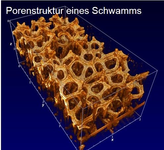Attaching Photochemically Active Ruthenium Polypyridyl Complex Units to Amorphous Hydrogenated Carbon (a-C:H) Layers
Advanced Materials Interfaces. Bd. 1801308. Wiley 2018 S. 1 - 11
Erscheinungsjahr: 2018
Publikationstyp: Zeitschriftenaufsatz (Forschungsbericht)
Sprache: Englisch
Doi/URN: 10.1002/admi.201801308
| Geprüft | Bibliothek |
Inhaltszusammenfassung
Amorphous hydrogenated carbon (a‐C:H) films are applied 500 nm thick on Si(100) via plasma‐enhanced chemical vapor deposition (PECVD) using ethyne. Present plasma conditions enrich the sp2‐content especially toward the outermost a‐C:H layers, which in turn are used to attach a photoactive Ru‐polypyridyl complex to the surface. An azo‐bridged dinuclear Ru‐polypyridyl complex is optimized in synthesis and the final mononuclear fragment attached on a‐C:H photochemically under UV‐irradiation with...Amorphous hydrogenated carbon (a‐C:H) films are applied 500 nm thick on Si(100) via plasma‐enhanced chemical vapor deposition (PECVD) using ethyne. Present plasma conditions enrich the sp2‐content especially toward the outermost a‐C:H layers, which in turn are used to attach a photoactive Ru‐polypyridyl complex to the surface. An azo‐bridged dinuclear Ru‐polypyridyl complex is optimized in synthesis and the final mononuclear fragment attached on a‐C:H photochemically under UV‐irradiation with concomitant N2 release. The Ru‐polypyridyl complex is characterized by MS, NMR, IR, UV/VIS, fluorescence spectroscopy, and time‐dependent density functional theory (DFT) calculations. Crystallographic data for the intermediate 4‐nitro‐2‐(pyridin‐2‐yl)pyridine 1‐oxide as essential precursor are established. Morphological characteristics of the a‐C:H@Si and final Ru(complex)@a‐C:H@Si combinations are determined by atomic force microscopy (AFM) revealing individual grain‐like structures. The presence of Ru on the a‐C:H@Si surface is initially verified qualitatively by laser‐induced breakdown spectroscopy (LIBS) and by inductively coupled plasma‐sector field mass spectrometry (ICP‐SF‐MS) after chemical digestion. With laser ablation‐ICP‐MS mapping, full Ru coverage is proven, also revealing inhomogeneities in terms of "Ru hot spots". The current investigation proves the successful attachment of a Ru‐complex on a‐C:H and indicates a starting point for the development of further material combinations for feasible sunlight to energy conversions.» weiterlesen» einklappen
Autoren
Klassifikation
DFG Fachgebiet:
DDC Sachgruppe:
Physik
Verknüpfte Personen
- Georg Ankerhold
- Professor
(FB Mathematik und Technik)
- Christian Fischer
- Forscher
(Oberflächenphysik)
- Stefan Wehner
- Leiter
(Oberflächenphysik)
- Wolfgang Imhof
- Mitarbeiter/in
(Abteilung Chemie)


